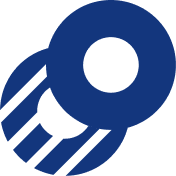Landing pages are pivotal in digital marketing, serving as the first impression potential customers have of your brand. A well-crafted landing page can significantly increase conversions, driving more sales and leads for your business. As we step into 2024, the dynamics of landing page design are evolving, with new trends and best practices shaping the way we capture and convert traffic. In this guide, we’ll explore everything you need to know to create high-converting landing pages that are optimized for the year ahead.
Understanding the Basics of Landing Pages
Before diving into the design and optimization strategies, it’s crucial to understand what a landing page is and its purpose. A landing page is a standalone web page designed specifically for a marketing or advertising campaign. It’s where a visitor “lands” after clicking on a link in an email, ad, or other digital locations. Unlike other pages on your website, a landing page is highly focused, with a single call-to-action (CTA) intended to drive conversions.
Key elements of a landing page include:
- Headline: The first thing visitors see, and it should be compelling enough to keep them interested.
- Subheadline: Provides additional context to the headline, reinforcing the message.
- Visuals: High-quality images, videos, or graphics that support the page’s message.
- CTA Button: The action you want visitors to take, such as “Sign Up Now” or “Get Started.”
- Social Proof: Testimonials, reviews, or case studies that build credibility.
- Lead Form: A form for collecting visitor information, essential for generating leads.
Crafting a Compelling Value Proposition
Your value proposition is the core of your landing page. It’s the promise of value you make to your visitors, explaining why they should choose your product or service over others. In 2024, with the increasing competition in the digital space, your value proposition needs to be clear, concise, and differentiated.
How to create a strong value proposition:
- Focus on Benefits, Not Features: Highlight what your product or service can do for the user, rather than just listing features.
- Be Specific: Use clear and specific language that speaks directly to the needs and desires of your target audience.
- Differentiate: Identify what makes your offering unique and emphasize that in your value proposition.
- Test and Refine: Use A/B testing to experiment with different versions of your value proposition to see what resonates most with your audience.
Designing for Conversion
Design plays a critical role in the effectiveness of your landing page. In 2024, minimalist and user-friendly designs that focus on the user experience (UX) will continue to dominate. Your landing page design should guide visitors seamlessly towards the desired action.
Best practices for landing page design:
- Clean and Simple Layout: Avoid clutter. Use white space effectively to make your content easy to digest.
- Responsive Design: Ensure your landing page looks great and functions well on all devices, especially mobile.
- High-Quality Visuals: Use images and videos that are relevant to your message and resonate with your audience.
- Contrast and Color: Use contrasting colors for your CTA buttons to make them stand out. Color psychology can also be leveraged to influence emotions and actions.
- Readability: Use large, legible fonts and break up text into short paragraphs or bullet points.
Writing Persuasive Copy
The copy on your landing page should be tailored to your audience, addressing their pain points and presenting your solution in a compelling way. Every word counts, so make sure your copy is concise, persuasive, and action-oriented.
Tips for writing effective landing page copy:
- Know Your Audience: Understand the needs, desires, and pain points of your target audience. Use language that speaks directly to them.
- Keep It Short and Sweet: Visitors should be able to understand your message at a glance. Avoid long blocks of text.
- Use Power Words: Incorporate words that evoke emotion and encourage action, such as “free,” “exclusive,” “limited time,” “proven,” and “guaranteed.”
- Focus on the Benefits: Clearly outline how your product or service will improve the visitor’s life or solve a problem.
- Include a Strong CTA: Your call-to-action should be direct and compelling, encouraging visitors to take the next step.
Leveraging Social Proof
Social proof is a powerful psychological trigger that can significantly boost your landing page’s conversion rates. It reassures visitors that others have benefited from your product or service, making them more likely to convert.
Forms of social proof to include:
- Customer Testimonials: Quotes from satisfied customers that highlight the benefits of your offering.
- Case Studies: Detailed examples of how your product or service has solved problems for specific customers.
- User Reviews and Ratings: Display average star ratings and user reviews from platforms like Google or Yelp.
- Trust Badges: Logos of reputable brands you’ve worked with, security certifications, or industry awards.
- Influencer Endorsements: If relevant, endorsements from influencers or industry experts can add significant credibility.
Implementing Advanced Personalization
Personalization is no longer optional; it’s expected. In 2024, personalized landing pages that cater to the specific needs and preferences of visitors will see higher conversion rates. Use data and technology to tailor the experience for each visitor.
Personalization strategies:
- Dynamic Content: Use tools to display different content based on visitor behavior, location, or demographics.
- Behavioral Targeting: Show relevant offers or content based on the visitor’s previous interactions with your brand.
- Segmentation: Create multiple versions of your landing page for different audience segments, ensuring each version speaks directly to the segment’s needs.
Optimizing for Speed and Performance
In a fast-paced digital world, the speed and performance of your landing page can make or break your conversion rates. Slow-loading pages lead to high bounce rates, and with Google’s emphasis on Core Web Vitals, optimizing for speed is crucial.
Steps to optimize landing page speed:
- Compress Images and Files: Reduce the file size of images, videos, and other media without compromising quality.
- Minimize HTTP Requests: Limit the number of elements on your page to reduce load times.
- Use a Content Delivery Network (CDN): A CDN can help speed up the delivery of your landing page content to visitors across the globe.
- Leverage Browser Caching: Enable caching to reduce load times for repeat visitors.
- Optimize Code: Minify CSS, JavaScript, and HTML to remove unnecessary characters and reduce file sizes.
Utilizing A/B Testing for Continuous Improvement
A/B testing is a critical tool for optimizing your landing pages. By testing different elements of your page, you can identify what works best for your audience and continuously improve your conversion rates.
What to A/B test on your landing page:
- Headlines and Subheadlines: Experiment with different versions to see which captures attention and drives engagement.
- CTA Buttons: Test different colors, wording, and placement of your call-to-action buttons.
- Images and Videos: Try different visuals to see which resonate most with your audience.
- Form Fields: Test the number of fields in your lead form. Sometimes, reducing the number of required fields can increase conversions.
- Copy Variations: Experiment with different messaging, tones, and value propositions.
Measuring Success and Analyzing Performance
To ensure your landing page is performing at its best, you need to track and analyze key metrics. These insights will help you understand what’s working, what’s not, and where there’s room for improvement.
Key metrics to track:
- Conversion Rate: The percentage of visitors who complete the desired action.
- Bounce Rate: The percentage of visitors who leave your landing page without taking any action.
- Average Time on Page: How long visitors stay on your landing page. Longer times generally indicate higher engagement.
- Click-Through Rate (CTR): The percentage of visitors who click on your CTA or other links on the page.
- Lead Quality: Assess the quality of the leads generated by your landing page by tracking their progress through your sales funnel.
Staying Ahead of 2024 Landing Page Trends
As we move further into 2024, staying on top of emerging trends is essential to keep your landing pages fresh and effective. Here are some trends to watch:
- Interactive Content: Quizzes, calculators, and other interactive elements that engage visitors and encourage them to take action.
- AI and Chatbots: Integrating AI-driven chatbots to provide real-time assistance and guide visitors towards conversion.
- Sustainability Messaging: As consumers become more environmentally conscious, incorporating sustainability into your value proposition can resonate with a growing audience.
- Voice Search Optimization: With the rise of voice-activated devices, optimizing your landing page for voice search can help capture more traffic.
Conclusion
Creating high-converting landing pages in 2024 requires a deep understanding of your audience, a strong value proposition, and a keen eye for design and performance optimization. By focusing on these elements and staying ahead of emerging trends, you can build landing pages that not only capture attention but also drive meaningful conversions. Remember, continuous testing and optimization are key to maintaining and improving your results over time.
For businesses looking to take their landing pages to the next level, partnering with experts like Brillmark can provide the specialized knowledge and skills needed to achieve your conversion goals. Whether you’re building from scratch or optimizing existing pages, Brillmark offers comprehensive A/B testing services, full-stack development, and conversion rate optimization to ensure your landing pages perform at their best.











